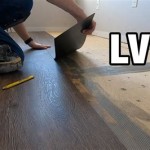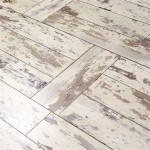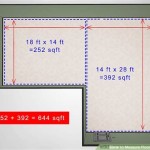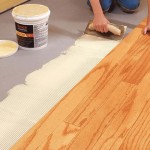Cost Difference Between Laminate and Hardwood Flooring
When undertaking a flooring project, one of the primary considerations is cost. Both laminate and hardwood flooring are popular choices, each offering distinct aesthetic and performance characteristics. Understanding the cost differences between these two options is crucial for making an informed decision that aligns with budgetary constraints and desired outcomes.
The cost of flooring encompasses more than just the price of the materials themselves. Installation expenses, underlayment requirements, maintenance considerations, and the potential for repairs or replacements all contribute to the overall financial burden. A comprehensive cost analysis should account for these factors to provide a complete picture of the long-term investment associated with each flooring type.
Material Costs: A Primary Divergence
The most apparent difference in cost lies in the price of the materials. Hardwood flooring, particularly solid hardwood, is generally significantly more expensive than laminate flooring. This price disparity stems from several factors, including the sourcing, processing, and rarity of the wood itself. Certain exotic hardwoods, such as Brazilian cherry or tigerwood, can command extremely high prices due to their limited availability and unique aesthetic qualities.
Solid hardwood flooring consists of planks made from a single piece of wood. This construction method requires harvesting mature trees and carefully milling the wood to precise dimensions. The labor-intensive process, coupled with the natural variations inherent in wood grain and color, contributes to the higher cost. Furthermore, the market demand for hardwood flooring, driven by its perceived value and timeless appeal, sustains its higher price point.
Engineered hardwood offers a slightly more affordable alternative. It comprises a thin veneer of natural hardwood bonded to a core of plywood or fiberboard. While the surface layer provides the aesthetic appeal of solid hardwood, the underlying layers reduce the amount of expensive hardwood required, thereby lowering the overall cost. However, engineered hardwood still typically commands a higher price than laminate flooring.
Laminate flooring, in contrast, is a synthetic product constructed from multiple layers of composite materials. The core layer is usually made of high-density fiberboard (HDF) or medium-density fiberboard (MDF), which provides stability and support. A decorative layer, typically a photographic image of wood grain, is applied to the core, followed by a transparent wear layer that protects the underlying image from scratches, stains, and fading.
The manufacturing process for laminate flooring is generally less expensive than that for hardwood. The materials are readily available and the production process is highly automated, resulting in lower production costs. Moreover, the ability to replicate various wood species and designs through photographic imaging allows laminate flooring to mimic the appearance of expensive hardwoods at a fraction of the price.
The difference in material costs can be substantial. While basic laminate flooring may cost between $1 and $5 per square foot, hardwood flooring can range from $5 to $15 per square foot or even higher, depending on the species, grade, and finish. Engineered hardwood typically falls in between, ranging from $3 to $10 per square foot.
Installation Costs: Impacting the Total Expense
Installation costs represent another significant component of the overall flooring expense. While some homeowners opt for DIY installation to save money, professional installation is often recommended, especially for hardwood flooring, to ensure proper acclimation, subfloor preparation, and precise installation techniques.
Hardwood flooring installation typically requires more specialized skills and tools than laminate flooring installation. Solid hardwood needs to be nailed or glued down to the subfloor, and proper spacing is essential to allow for expansion and contraction due to changes in humidity. Improper installation can lead to warping, buckling, or gapping, requiring costly repairs or replacements.
Engineered hardwood installation is generally less demanding than solid hardwood installation, as it can often be installed using a floating method, where the planks are connected to each other but not directly to the subfloor. This method simplifies the installation process and reduces the risk of moisture-related damage.
Laminate flooring is known for its ease of installation. Most laminate flooring products feature a click-lock system, which allows the planks to be easily connected without the need for nails or glue. This makes laminate flooring a popular choice for DIY projects, as it requires minimal specialized tools and skills.
However, even with laminate flooring, proper subfloor preparation is essential. The subfloor must be clean, level, and dry to ensure a stable and even surface for the laminate flooring. Uneven subfloors can lead to premature wear and tear, as well as an uneven appearance. Therefore, professional installation may still be warranted in certain cases, particularly if the subfloor requires extensive repair or leveling.
The cost of professional installation varies depending on the complexity of the project, the size of the area, and the installer's rates. However, as a general rule, hardwood flooring installation is more expensive than laminate flooring installation. Labor costs for hardwood installation can range from $3 to $8 per square foot, while laminate installation may cost between $1 and $4 per square foot.
Long-Term Ownership Costs: Maintenance and Durability
In addition to the initial material and installation costs, it's important to consider the long-term ownership costs associated with each flooring type. These costs include maintenance, repairs, and potential replacements. The durability and maintenance requirements of the flooring material significantly impact these long-term expenses.
Hardwood flooring is known for its durability and longevity. With proper care and maintenance, hardwood floors can last for decades, even centuries. However, hardwood is also susceptible to scratches, dents, and water damage. Regular cleaning, polishing, and periodic refinishing are necessary to maintain its appearance and prevent damage.
Refinishing hardwood floors involves sanding down the existing finish and applying a new coat of stain and sealant. This process can restore the original beauty of the wood and extend its lifespan. However, refinishing can be a costly undertaking, typically ranging from $3 to $8 per square foot.
Engineered hardwood offers improved resistance to moisture and temperature fluctuations compared to solid hardwood. However, it is still susceptible to damage and requires similar maintenance practices. The ability to refinish engineered hardwood depends on the thickness of the veneer layer. Thicker veneers can be refinished multiple times, while thinner veneers may only allow for one or two refinishing cycles.
Laminate flooring is generally more resistant to scratches, stains, and fading than hardwood. Its durable wear layer provides a protective barrier against everyday wear and tear. Laminate flooring also requires less maintenance than hardwood, typically only needing regular sweeping and occasional mopping.
However, laminate flooring is not as durable as hardwood in the long run. It cannot be refinished, and if it is damaged, it must be replaced. While individual planks can sometimes be replaced, if the damage is extensive, the entire floor may need to be replaced. The lifespan of laminate flooring typically ranges from 10 to 20 years, depending on the quality of the product and the level of traffic it receives.
Over the long term, the cost of maintaining and potentially replacing laminate flooring may be lower than the cost of maintaining and refinishing hardwood flooring. However, the lifespan of hardwood flooring is significantly longer, and its timeless appeal can add value to a home for many years.
In summary, the cost difference between laminate and hardwood flooring is multifaceted, encompassing material costs, installation expenses, and long-term ownership considerations. While laminate flooring offers a more affordable initial investment, hardwood flooring provides superior durability, longevity, and aesthetic appeal. The optimal choice depends on individual priorities, budgetary constraints, and desired outcomes.

Engineered Hardwood Vs Laminate Flooring

Laminate Flooring Vs Hardwood A Detailed Comparison Of Cost Durability And Style Palmetto Fl Ansbro Aldrich

Hardwood Flooring Cost 2024 Per Square Foot Mk

Hardwood Flooring Vs Laminate Ventura

Laminate Vs Vinyl Flooring Costs Pros Cons Differences 2025

Laminate Vs Hardwood Flooring Which Is Better My Affordable

Flooring Installation Cost Guide 2025 Average S By Type

Floor Replacement Cost To Refloor A House Fixr

Engineered Hardwood Floors Vs Laminate Find The Best One

Cost Of Diffe Flooring Types
Related Posts








